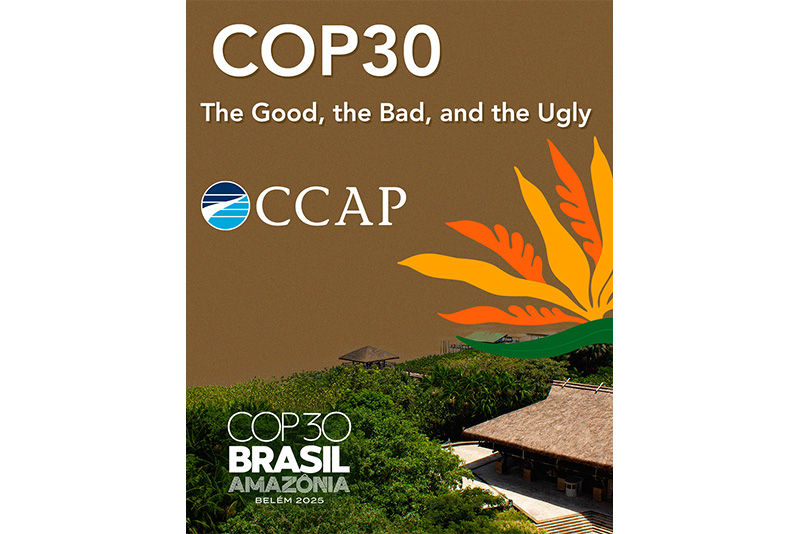Sustainable finance taxonomies: A critical tool for green investment
- Jorge Hinojosa

- Jan 13, 2022
- 4 min read
Updated: Jun 29, 2023
Pressure to meet national and global climate goals, along with demand from investors, is pushing countries to develop new tools to facilitate sustainable development. One important method shaping the investment landscape to achieve these goals are sustainable finance taxonomies, which can help nations facilitate low-carbon projects and can help lend clarity to investors, both local and international.
In this rapidly-evolving context, now is a good time to take a look at what sustainable finance taxonomies are and why we need them.
What is a sustainable finance taxonomy?
A sustainable finance taxonomy is a classification system of economic activities that provides criteria to evaluate activities’ environmental sustainability. It provides definitions and guidelines to investors to help them know what economic activities are sustainable and in what circumstances. Taxonomies are usually developed by governing bodies, such as the EU or an individual country, or financial institutions as a policy tool.
Taxonomies helps investors and corporations working within a region to make investment decisions and to allocate capital. By providing a clear definition on what is sustainable, taxonomies increase market clarity. Market clarity can help attract international investment by reducing risk.
Taxonomies also help governments achieve carbon-reduction goals and foster green investment. By providing clarity, ideally defined through technical screening criteria, a sustainable finance taxonomy will enhance market integrity and transparency and reduce greenwashing practices. Countries can use taxonomies to achieve climate or sustainability goals by setting sustainable finance definitions in line with the national goals (e.g., a country’s Nationally Determined Contribution). Finally, they enable countries to identify and address financial and investment gaps across all sectors.
The current state of sustainable finance taxonomies
As shown in Figure 1, many jurisdictions have already developed or are in the process of developing a sustainable finance taxonomy. The countries that have made the most progress, such as the European Union (EU), China, Japan, and Mongolia, are in the process of implementation.
In addition, international organizations such as the Climate Bonds Initiative (CBI) and a group of multilateral development banks (MDBs) have published and implemented taxonomy documents with a specific aim to support investors in classifying sustainable assets across sectors. Recognized as a key policy instrument to achieve the sustainability goals, taxonomies are under development in Europe, Asia, South America, and Australia.

Figure 1. Landscape of sustainable finance taxonomies
To date, the EU taxonomy is recognized as the most advanced and comprehensive taxonomy that is benchmarked by many countries. The EU taxonomy is a legally binding tool within that region. The overall plan of the EU taxonomy is to classify activities that contribute to the EU’s six environmental objectives. As of today, classification of economic activities related to two objectives – climate mitigation and climate adaptation – has been advanced. The EU taxonomy is the first to include additional environmental and social issues.
Other governments are using the EU taxonomy, the CBI taxonomy and other countries’ examples to develop their own tools. Even though many countries are using the EU taxonomy as a jumping off point, taxonomy development is being tailored to individual countries’ needs and priorities. For example, Bangladesh is using a list of green investment products that banks and institutions can use as eligible for green financing. Other countries, such as Colombia, are using the CBI taxonomy as a guideline for the private sector. This allows the financial sector to use an international standard for sustainable investments, facilitating the classification of assets and industries. Nevertheless, Colombia is also defining the participation of public sector institutions and sectoral priorities to finalize its own taxonomy.
On the other hand, China is developing its own taxonomy, focusing on green bonds, defining a list of green industries for investors.
There is no international standard in place.
Looking forward
Sustainable finance taxonomies have evolved from defining only climate considerations to evaluating impact on other environmental and social goals. But countries are looking for an adequate benchmark or standard to follow when developing their taxonomies. It would benefit individual countries and the global investment landscape if countries were able to harmonize their taxonomies and find common definitions for sustainable activities. That agreement would facilitate sustainable investments across jurisdictions.
Efforts are being made to find areas of commonality and differences across taxonomies and define a standard that can help international investors across countries. For instance, the ASEAN countries have released the first version of the ASEAN Taxonomy for Sustainable Development. This version provides a framework for discussion toward formalizing a regional taxonomy. More broadly, an initial exercise of a common ground taxonomy led by the International Platform on Sustainable Finance (IPSF) aims to improve the comparability and interoperability of taxonomies worldwide.
Sustainable finance taxonomies are evolving tools that are adopting new regulations and metrics with time. They evolve with the international context and many of them are still in the development process. We are still at an initial stage in terms of taxonomies and the regulation outcomes from the EU are expected to play an essential role in the implementation of further sustainable finance taxonomies worldwide. More and more taxonomies are being developed at this time, and it is yet to be seen how international benchmarks and standards can help countries achieve their sustainability goals.
CCAP is currently engaged on a project to provide a comprehensive analysis and technical training to GIZ on current sustainable finance taxonomies and recent trends in their development.
This CCAP Insight was written in conjunction with Samantha Youngeun Shin.




شيخ روحاني
رقم شيخ روحاني
الشيخ الروحاني
الشيخ الروحاني
شيخ روحاني سعودي
رقم شيخ روحاني
شيخ روحاني مضمون
Berlinintim
Berlin Intim
جلب الحبيب
https://www.eljnoub.com/
https://hurenberlin.com/
Tentang kabar4d